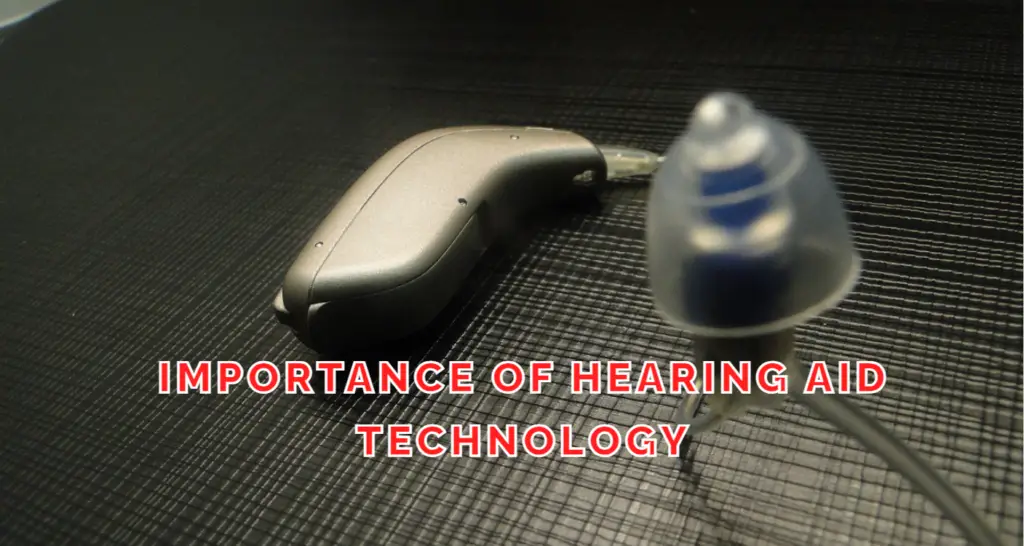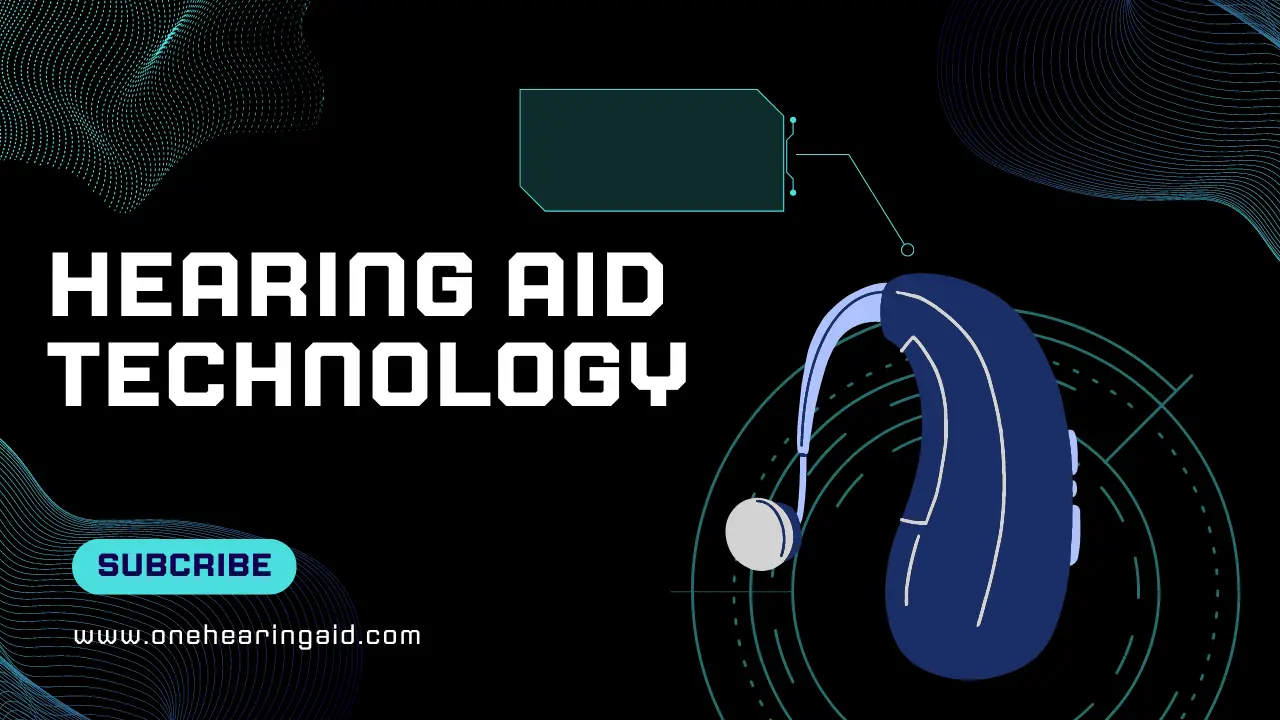Introduction to Hearing Aid Technology
Hearing aid technology has come a long way in recent years, providing invaluable support to millions of people with hearing loss. From its humble beginnings to the advanced digital devices available today, hearing aids have transformed the lives of many. But how exactly do these devices work, and what makes modern hearing aids so effective? Let’s dive into the fascinating world of hearing aid technology.

Importance of Hearing Aid Technology
Hearing loss can significantly impact an individual’s quality of life, affecting communication, social interactions, and overall well-being. Hearing aids are essential tools that help mitigate these effects, enabling people to engage more fully in their daily lives.
Brief History of Hearing Aids
The journey of hearing aids began with simple ear trumpets in the 17th century, which merely amplified sound. Over the years, technology advanced, leading to the development of electric hearing aids in the early 20th century. The introduction of digital hearing aids in the 1990s marked a significant milestone, offering more precise sound processing and customization.
How Hearing Aids Work
Basic Components
Hearing aids are composed of several key components: a microphone, an amplifier, a speaker (receiver), and a battery. The microphone picks up sound waves, which are then converted into electrical signals. These signals are processed and amplified by the amplifier before being sent to the speaker, which delivers the enhanced sound to the ear.
Sound Processing
Modern hearing aids use digital signal processing (DSP) to convert sound waves into digital signals. This technology allows for advanced features like noise reduction, feedback cancellation, and precise sound amplification tailored to the user’s hearing loss.
Types of Hearing Aids
Behind-the-Ear (BTE)
BTE hearing aids sit behind the ear and are connected to an earmold that fits inside the ear canal. They are suitable for a wide range of hearing losses and are known for their durability and ease of use.
In-the-Ear (ITE)
ITE hearing aids fit entirely within the outer ear. They are larger than some other types but offer features like volume control and a longer battery life.
In-the-Canal (ITC)
ITC hearing aids are smaller than ITE aids and fit partially in the ear canal. They are less visible and can be more comfortable for some users.
Completely-in-Canal (CIC)
CIC hearing aids fit completely inside the ear canal, making them almost invisible. They are ideal for mild to moderate hearing loss but may lack some advanced features due to their small size.
Invisible-in-Canal (IIC)
IIC hearing aids are the smallest available and fit deep within the ear canal, making them completely invisible. They are suitable for mild to moderate hearing loss and are highly discreet.
Advanced Features in Modern Hearing Aids
Digital Signal Processing (DSP)
DSP technology allows for precise sound processing and customization. It can differentiate between speech and background noise, enhancing the user’s ability to understand conversations in noisy environments.
Bluetooth Connectivity
Many modern hearing aids come with Bluetooth connectivity, allowing users to stream audio directly from their smartphones, tablets, and other devices. This feature enhances the listening experience and provides additional convenience.
Rechargeable Batteries
Rechargeable hearing aids eliminate the need for frequent battery changes, offering a more sustainable and cost-effective solution. They can be charged overnight and provide a full day of use.
Noise Reduction and Cancellation
Advanced noise reduction and cancellation features help filter out unwanted background noise, making it easier to focus on conversations and important sounds.
Customizing Hearing Aids
Fitting and Adjustments
Proper fitting and adjustments are crucial for optimal hearing aid performance. Audiologists use specialized software to fine-tune the device settings based on the user’s hearing profile and preferences.
Programmable Settings
Modern hearing aids can store multiple programmable settings, allowing users to switch between different listening environments, such as quiet rooms or noisy outdoor settings, with ease.
Importance of Professional Assistance
Consulting with a professional audiologist ensures that hearing aids are correctly fitted and programmed, maximizing their effectiveness and comfort.
Benefits of Modern Hearing Aids
Improved Hearing Quality
Modern hearing aids offer superior sound quality, allowing users to hear speech and other sounds more clearly and naturally.
Enhanced Communication
With better hearing, users can engage more fully in conversations, improving their social interactions and reducing feelings of isolation.
Better Quality of Life
Improved hearing leads to a better overall quality of life, enabling users to participate in activities they enjoy and maintain their independence.
Challenges and Limitations
Cost Considerations
Hearing aids can be expensive, and not all insurance plans cover the cost. However, there are various financing options and assistance programs available.
Maintenance and Care
Regular maintenance and care are essential to keep hearing aids functioning properly. This includes cleaning, battery replacement, and occasional repairs.
Technological Limitations
While modern hearing aids are highly advanced, they may not fully restore normal hearing and can sometimes struggle in very noisy environments.
Future Trends in Hearing Aid Technology
Artificial Intelligence (AI)
AI is poised to revolutionize hearing aid technology by enabling devices to learn and adapt to the user’s listening preferences and environments automatically.
Integration with Other Devices
Future hearing aids may offer even greater integration with other smart devices, providing seamless connectivity and enhanced functionality.
Miniaturization and Aesthetics
Advancements in miniaturization will continue to make hearing aids smaller and more discreet, improving their aesthetic appeal and comfort.
Hearing Aid Maintenance Tips
Cleaning and Storage
Regular cleaning and proper storage are crucial to maintain hearing aid performance and longevity. Users should follow the manufacturer’s guidelines for care.
Battery Care
For non-rechargeable hearing aids, regular battery replacement is necessary. Users should keep spare batteries on hand and follow proper disposal methods.
Regular Check-ups
Regular check-ups with an audiologist help ensure that hearing aids are functioning correctly and that any necessary adjustments are made.
Common Myths about Hearing Aids
Hearing Aids Are Only for the Elderly
Hearing aids are used by people of all ages. Hearing loss can affect anyone, regardless of age, and modern hearing aids are designed to meet diverse needs.
Hearing Aids Restore Hearing to Normal
While hearing aids significantly improve hearing, they do not fully restore normal hearing. They enhance the user’s ability to hear and understand sounds.
All Hearing Aids Are the Same
Hearing aids vary widely in terms of features, technology, and design. It’s essential to choose a device that matches the user’s specific hearing needs and lifestyle.
Choosing the Right Hearing Aid
Assessing Hearing Needs
Understanding one’s hearing needs is the first step in choosing the right hearing aid. An audiologist can perform tests to determine the degree and type of hearing loss.
Consulting with Audiologists
Professional guidance from an audiologist is crucial in selecting, fitting, and adjusting hearing aids to ensure they meet the user’s needs.
Considering Lifestyle Factors
Lifestyle factors, such as activity level and common listening environments, should be considered when choosing a hearing aid to ensure it provides the necessary support.
Hearing Aid Accessibility and Insurance
Insurance Coverage
Some insurance plans cover the cost of hearing aids, though coverage can vary widely. It’s important to check with the insurance provider for specific details.
Government Programs
Government programs, such as Medicare and Medicaid, may offer assistance with hearing aid costs for eligible individuals.
Non-Profit Assistance
Non-profit organizations often provide financial assistance and resources to help individuals obtain hearing aids.
Hearing Aids for Children
Special Considerations
Children with hearing loss require specially designed hearing aids that accommodate their growing ears and developmental needs.
Types of Hearing Aids for Children
Various types of hearing aids are available for children, including BTE models that can be adapted as the child grows.
Importance of Early Intervention
Early intervention is crucial for children with hearing loss to support language development and academic success.
Personal Stories and Testimonials
Experiences of Hearing Aid Users
Personal stories from hearing aid users highlight the transformative impact these devices can have on daily life.
Impact on Daily Life
Hearing aids can significantly improve users’ ability to communicate, participate in social activities, and enjoy life more fully.
Success Stories
Success stories illustrate the positive outcomes of using hearing aids, encouraging others to seek help for their hearing loss.
Conclusion
Hearing aid technology has made incredible strides, offering numerous benefits to those with hearing loss. From improved hearing quality to enhanced communication and overall better quality of life, modern hearing aids are invaluable tools. If you or a loved one is experiencing hearing loss, don’t hesitate to seek professional help and explore the available options.
FAQs
How often should hearing aids be replaced?
Hearing aids typically last between 3 to 7 years. However, advancements in technology and changes in hearing needs may necessitate more frequent replacements.
Can hearing aids be used with headphones?
Yes, many modern hearing aids can be used with headphones, especially those with Bluetooth connectivity, allowing for seamless audio streaming.
How long does it take to get used to hearing aids?
It can take a few weeks to a few months to fully adjust to hearing aids. Regular use and follow-up appointments with an audiologist can help ease the transition.
Are hearing aids waterproof?
Some hearing aids are water-resistant, but few are fully waterproof. It’s important to check the manufacturer’s specifications and avoid exposing hearing aids to water whenever possible.
What should I do if my hearing aid stops working?
If your hearing aid stops working, check the battery, clean the device, and ensure it is properly inserted. If the problem persists, consult your audiologist for further assistance.
Read More:
Rechargeable Hearing Aids in the USA


1 thought on “Hearing Aid Technology”